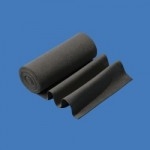Single product could be applied for radiation, thermal, and chemical burns in terrorist attack
Date: September 16, 2013
Company: Argentum Medical LLC of Geneva, Ill.
Contract amount: $7.8 million for the first two years and could be extended if milestones are met for up to a total of five years and $16.5 million
About this contract: The U.S. Department of Health and Human Services’ Office of the Assistant Secretary for Preparedness and Response (ASPR) will fund studies to determine the company’s existing wound and burn dressing, Silverlon, value in radiological or chemical emergencies. If successful, Silverlon could become the first product approved by the U.S. Food and Drug Administration for use on skin burns caused by ionizing radiation or sulfur mustard.
|
Silverlon is a long-acting silver-plated nylon bandage available commercially and used widely to aid in the healing acute wounds and thermal burns. The silver plating helps to kills bacteria, and one dressing can be used for up to seven days.
This announcement represents a larger federal effort to repurpose approved drugs and medical products to protect health and save lives in a terrorist attack. This approach is a cost-effective way to prepare our nation for the untoward impacts of chemical and radiological mass casualty events. |

|
Ionizing radiation, such as in the detonation of a nuclear or radiological device, kills cells exposed to it, and can cause deep burns to exposed skin that heal poorly. Sulfur mustard causes severe, delayed burns to the eyes, skin, and respiratory tract, damaging cells within minutes of contact; the onset of pain and other health effects is delayed until hours after exposure. Large exposures to sulfur mustard may be fatal.
Sulfur mustard, also known as mustard gas, was first used as a chemical weapon in World War I and can be released into the air, food or water.
Studies of the product’s use in treating radiation-induced or mustard-induced burns will be conducted under the FDA’s Animal Efficacy Rule. The Animal Efficacy Rule allows efficacy findings from adequate and well-controlled animal studies to support FDA approval when it is not feasible or ethical to conduct trials in humans.
If cleared by FDA for the new uses, emergency responders and medical personnel would be able to use the same product for different types of mass casualty incidents. The dressings are easy to use, can be left on wounds without changing for extended periods of time, and have a long shelf-life. They also potentially could be used for the treatment of soldiers exposed to ionizing radiation or sulfur mustards on the battlefield.
